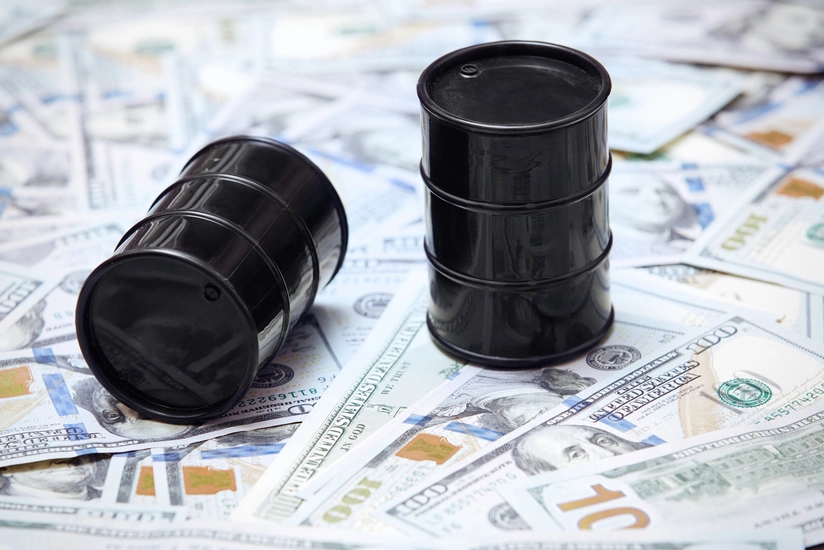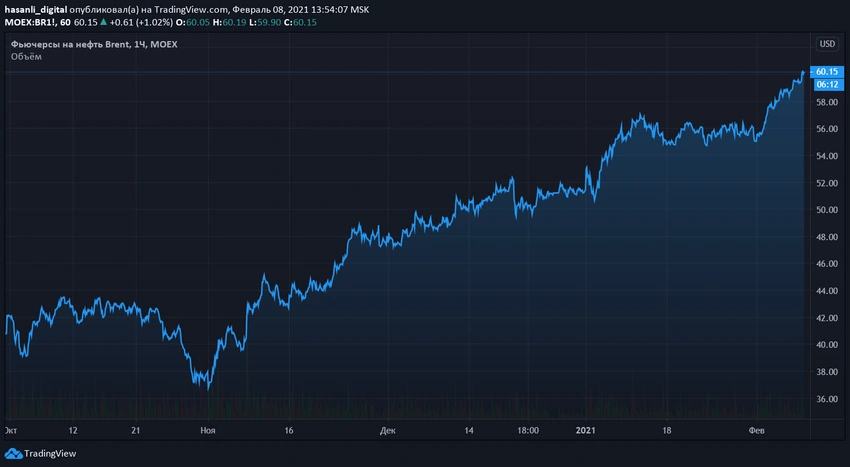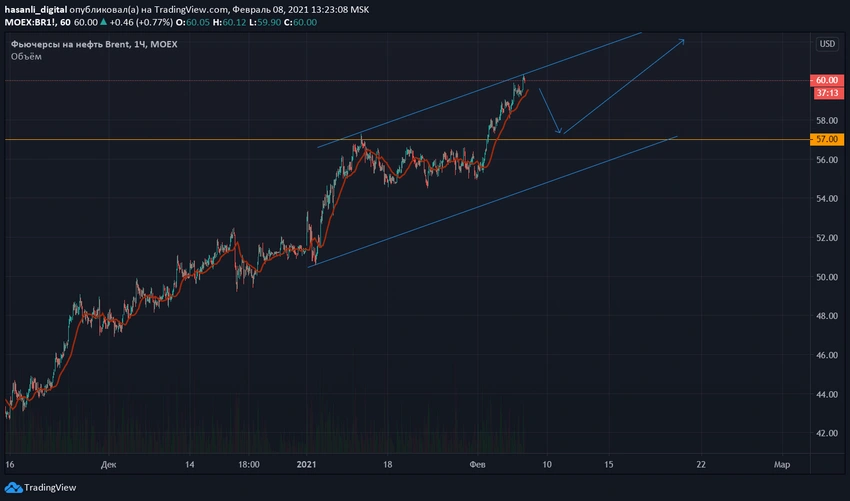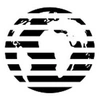Oil prices soared: What awaits the market?
- 08 February, 2021
- 12:45

Brent crude exceeded $60 per barrel on Feb. 8 morning for the first time since January 2020.
As of 12:30 (GMT +4), Brent costs $60.18 (7.41 percent increase).
Four main factors influence the rise in oil prices:
- The market perceives vaccination measures positively, hoping to soon return to pre-coronavirus life along with the accompanying consumption volumes.
- The US stock market positively anticipates adopting the stimulus package of $1.9 trillion by the US Congressmen.
- The oil demand is growing in Asian countries. China is the leading player there.
- OPEC+ measures to cut oil production are yielding positive results.

Brent’s growth is supported by increased demand, primarily in China. The country’s economy went through a V-shaped recovery and entered a confident growth trajectory - in the fourth quarter of 2020, the country’s GDP grew by 6.5 percent, and the economy grew by 2.3 percent in annual terms.
For this year, many financial institutions predict 8-9 percent growth in the Chinese economy, while oil consumption is expected to grow at 3-6 percent.
According to Bloomberg, 127 tankers with oil were heading to Chinese ports as of Feb. 5. If they are fully loaded, this will make about 250 million barrels of oil.
For almost the entire last year, China has been buying up oil that has fallen in price - 10.85 million barrels of oil entered the country daily, 7.3 percent more than in 2019.
Not only China but also other countries in the region are gradually increasing the oil demand. In South Korea, fuel purchases in the fourth quarter of 2020 increased by 62.7 percent compared to the same period in 2019. In the first quarter of this year, growth is expected at 38.2 percent. The same is observed in Japan. Amid an unexpectedly cold winter, Asian countries have to buy more oil and low-sulfur heating oil for power plants.
But there are also less obvious growth drivers - due to quarantine, people in many countries have switched to online shopping, which has increased the demand for fuel. Besides, there has been an increase in demand for other products, such as naphtha, which is used to make the plastics needed for packaging goods.
Nevertheless, despite the growing needs of the Asian market, world oil consumption is still 5-7 percent lower than in the pre-coronavirus period. But Saudi Aramco and British Petroleum predict a recovery in oil demand by the end of the year. At the same time, Goldman Sachs has more positive forecasts - recovery in demand should take place by August.
The OPEC+ agreement plays a positive role, under which oil production should be reduced by 7.125 million barrels per day in February and 7.05 million barrels per day in March. Besides, Saudi Arabia has decided to cut production by 1 million barrels per day in addition to its commitments under the OPEC+ agreement.
However, there are also risks of another fall in prices. US shale companies are one of the threats. Experts believe that with oil prices above $50, almost all wells have become profitable again. If against this background, there is a rapid growth in shale oil production in the US, this could bring down oil prices.

When looking at the chart above, an uptrend can be seen. The Brent price is likely to continue to grow, but some correction to the level of $57-$58 per barrel is possible, after which it will rise again to $62. However, this mark is unlikely to be stable in the long term. Therefore, most likely, further downward fluctuations are possible.
Azad Hasanli, financial analyst
